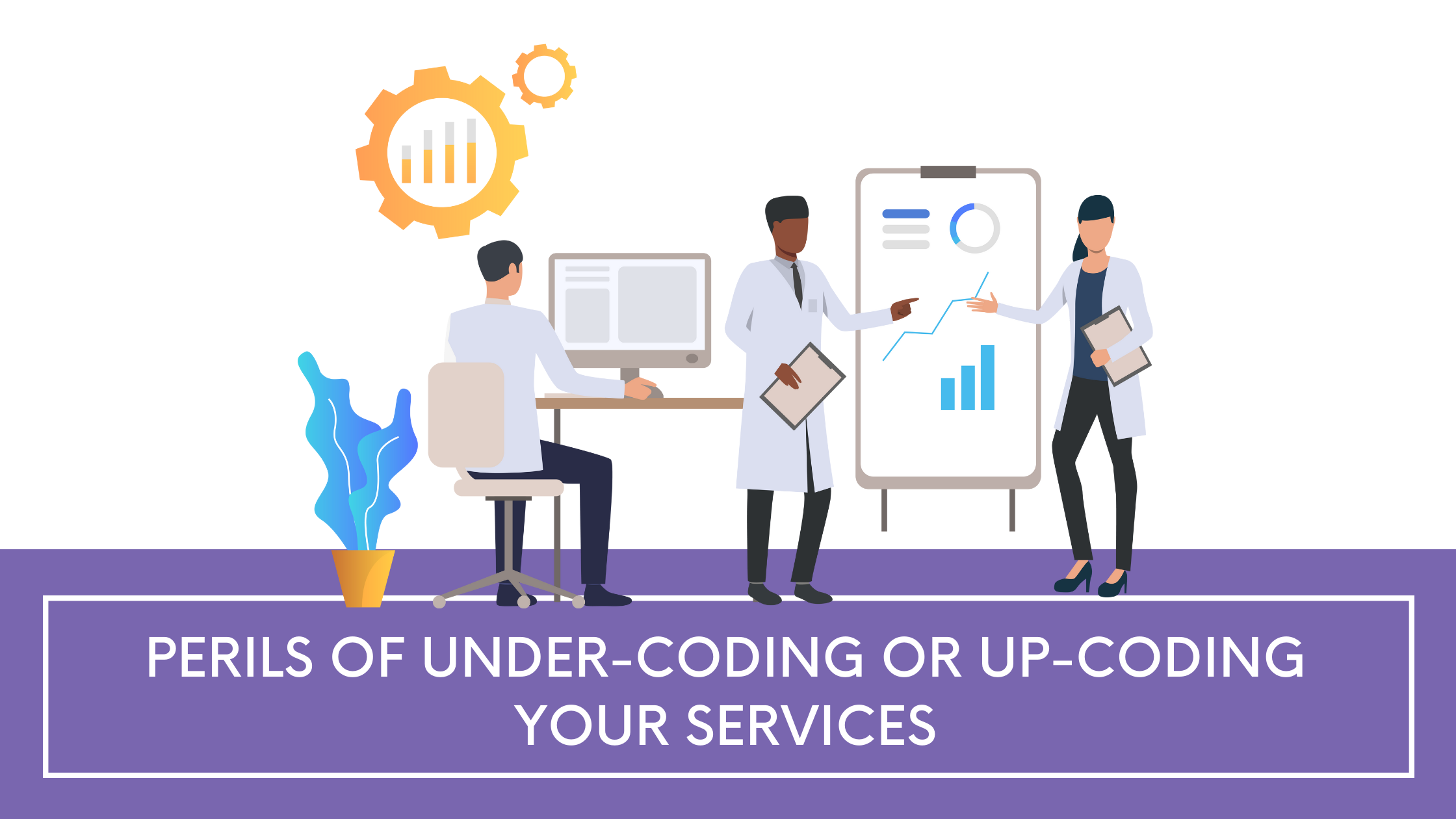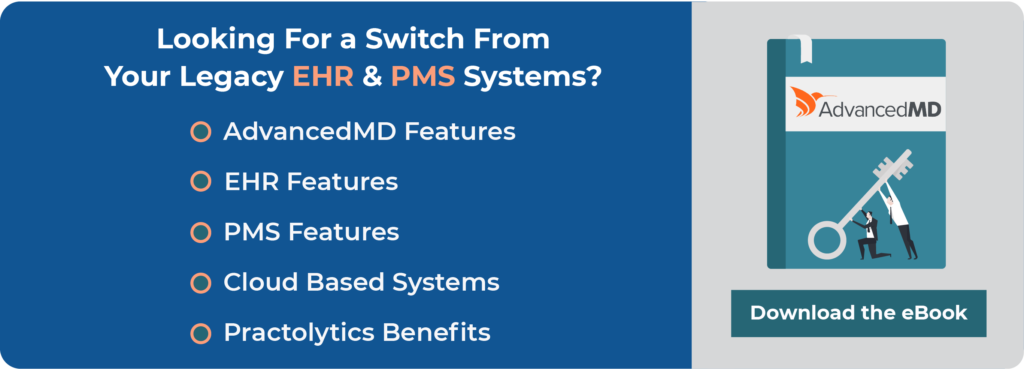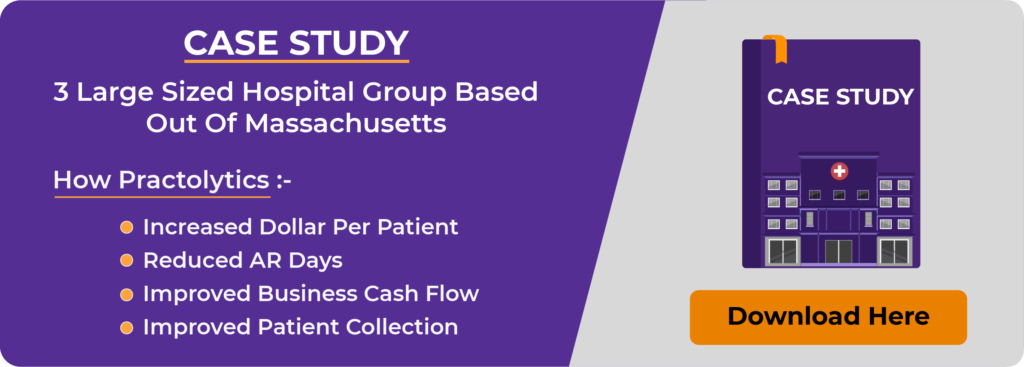Perils of Under-coding or Up-coding Your Services
Medical coding is an essential part of the healthcare system. It is the analysis of clinical statements and their conversion into industry known short codes that define medical diagnoses and procedures. When done accurately, it hastens reimbursement, improves revenue, and saves practices from several issues that arise from audits.
Conversely, if poorly done, it results in a series of adverse effects on your practice, your revenues, and exposes you to compliance risks. Under-coding or up-coding are two categories that signal poorly done medical coding. They are coding errors you should avoid because their consequences are very grave. This article expounds on the effects of under-coding or up-coding and how they affect your practice when audited.
Table of Contents
Perils of Under-coding or Up-coding Your Services
Before diving into the consequences of under-coding or up-coding, it’s essential to explain what they mean and how they are done within the healthcare system.
What are Up-coding and Under-coding?
In simple terms, up-coding involves reporting higher medical procedures or services and complicated diagnoses than what’s necessary or what’s supported through the provider’s documentation. It essentially means billing a patient a higher level of Evaluation and Management (E&M) for a minor problem. An example is when a diagnosis of chronic arthritis is reported when the patient has acute arthritis.
It occurs in two different ways, which include unbundling and upcoding. While the former involves separate billing for each component in a medical procedure instead of billing as a whole, the latter involves coding a higher level of service than what was executed.
Under-coding, on the other hand, is the direct opposite of up-coding. Typically, under-coding occurs when coding fails to account for all procedures involved in healthcare. While it can be a product of negligence or oversight, it can also be a deliberate effort to avoid audits. Unfortunately, as much as healthcare providers are advised to desist from this method, many still perpetrate this act. An example of under-coding is reporting complete ultrasound examination as a limited examination.
These two categories of malpractices can be regarded as fraud because they can serve as alternative means to make money. And they attract heavy consequences for your practice. Given the provision of the False Claims Act, a clinician can be liable under law for “submitting claims to Medicare for medical services he or she knows were not provided.” So, whether deliberate or unintentional, negligence or oversight of these degrees is never excused.
Perils of Under-coding or Up-coding Your Services
The following are some consequences of under-coding or up-coding your services:
Potential Exposure to Compliance Risks
Under-coding or Up-coding your services essentially signals the failure to act based on the provision of the laws and regulations guiding your industry. It doesn’t only attract legal penalties, fines, or forfeiture, but also leads to material loss and exposes your services to several compliance risks whose effects can be damaging. The law doesn’t pardon negligence or ignorance, so every physician should focus on this area of their service to ensure they align with the laid down rules.
Reduced Patronage
While treating patients and saving lives are the purposes of every healthcare provider, it is never out of place to get paid for these services. However, if these services are overcharged as a result of up-coding, and there’s an increase in healthcare premium, patients might find other providers to meet their health needs, thereby reducing those who get health care from your establishment.
Prevents Reimbursement
Medical coding is how your services are converted to revenue. Any form of inaccuracy in coding leads to payment delay or denial and degenerates into lower reimbursement. It also has a direct impact on your services and establishment bottom line. And your service can be hit with high upwards in the form of damages.
Also Read – Coding and Reimbursement Challenges in the Urgent Care Setting
Reduces Patients Safety
A critical factor in medical coding is consistency. The slightest inconsistencies, as little as swapping two digits, can indicate an entirely different diagnosis which would definitely affect patient experience. It leads to service delays, claims denials, and harms your revenue.
Bad Reputation
It’s widespread knowledge that bad news spreads faster. In the case of incorrect medical coding, your reputation can have the worst hit. Once a patient detects a huge bill for a procedure he or she didn’t have, it’ll be interpreted as a scam. This perception grows on your reputation and services, and you’d be identified negatively.
How Do All These Affect Your Practice?
The effect these have on your practice is catastrophic. Whether you up-code or under-code, it has a telling impact on your revenue. And if you fail to generate enough revenue, there’s no way you can keep the hospital doors open, and that’s a wrong signal for your practice as a healthcare provider.
The economic impact of inefficient coding is costly. A survey held in 2017 by the American Medical Group Association (AMGA) grounds this fact. A key finding in the survey is that the 10% loss in operating revenue recorded in 2016 increased to 17.5% in 2017. Medicare also reported a whopping $236 Million loss in 2008 as a result of under-coding or up-coding. So, if you fail in this area, your practice is open to huge financial loss.
Steps to Avoid the Perils of Up-coding or Under-coding for Your Practice
- Hire Professionals – As much as healthcare providers claim they can’t afford the services of professional coders, they also can’t afford to persist with coding inconsistencies. You can never downplay their expertise in your practice.
- Use Accurate Tools – For providers that are resolute on handling medical coding themselves, it’s essential to use the right software that’ll detect components that should be bundled in a procedure, as it dramatically improves reimbursement.
- Careful Use of EHRs – EHRs eases coding. But it’s essential to be cautious with its usage as physicians can inaccurately copy and paste wrong codes for patients, and it usually results in upcoding.
The Bottom Line
For every patient, there should be an optimal and detailed report and documentation of services delivery from diagnosis to procedures involved and treatments given. Anything lesser attracts perils for your services and practice.
Practolytics helps its clients with documentation and coding review and establishes the right set of coding guidelines and policies to ensure clients meet the regulatory requirements and also avoid up-coding and under-coding issues.
Also Read – Major Challenges in Documentation & Coding for Pain Management Services
Talk to Medical Billing Expert Today — Get a Free Demo Now!








